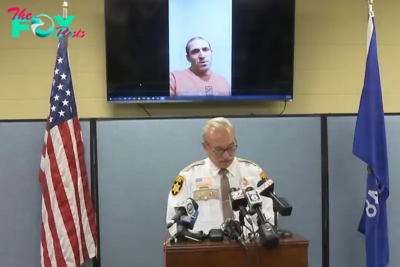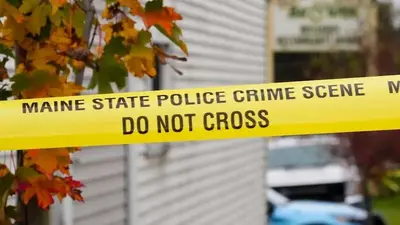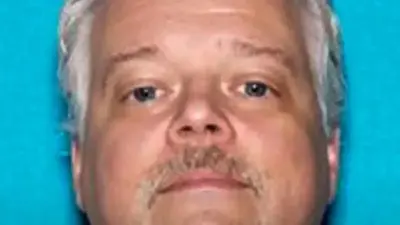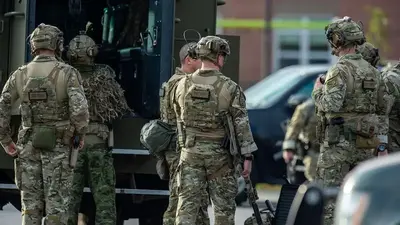US News
'A challenging year': North Carolina State confronts spate of student deaths on campus
With the end of its spring semester last week, North Carolina State University concluded a tragic school year that saw the deaths of 14 students.
Seven students died by suicide, two fatally overdosed, four passed away from natural causes, and one student was killed in a car accident, according to Mick Kulikowski, NC State's director of strategic communications and media relations. Over a dozen students and mental health experts described the loss of life at NC State to ABC News as staggering and tragic, as well as a concerning example of national trends in student mental health.
“I really started feeling it once it got to the fourth student death, because it really started to feel like it was an epidemic on campus at that point,” said Mariana Fabian, a fourth-year student and opinion editor for NC State's student newspaper, The Technician.

The deaths have cast an outsized shadow on the Raleigh campus, where classes continued through the year as the number of deaths gradually increased. NC State convened a task force devoted to mental health in November, releasing an 89-page report in late February that recommended a flurry of proposals to improve student life. The report's sobering conclusion: while NC State is "dedicated" to improving student mental health, "there is not only room for, but also a need for, additional efforts."
Apart from occasional wellness days and outreach following student deaths, the humdrum of college life continued at NC State, leaving little time for grieving according to some students.
“We're having to say goodbye to the students, but also focus on turning in an assignment,” junior Angelina Cordone told ABC News.
Some communities on campus have faced a larger toll of the tragedies — as at least seven students, including three who died by suicide, have been part of NC State’s School of Engineering, according to Kulikowski. With over 36,000 students, NC State has averaged eight student deaths, including three by suicide, annually since 2018, according to the task force's report.
"I think a lot of people really want to honor the lives that were lost, but there was also a big feeling of enough is enough," said Eleanor Lott, a sophomore and a member of NC State's mental health task force.
In late March, Vice Chancellor and Dean Doneka Scott described the year to ABC News as a tragic "outlier," pointing to the nationwide challenge of educating students amid a rise in depression and suicide among young people.
"Institutions across the country are grappling with this," Scott said. "This is not an NC State-only issue. It's an issue in higher education writ large."
The rate of suicide has roughly increased in the United States over the last two decades. Despite a two-year decline in 2019 and 2020, the rate rose again in 2021, with one of the most significant year-over-year jumps for those aged 15-24, according to the Centers for Disease Control and Prevention (CDC). For that age group, suicide remains the third-leading cause of death.
MORE: Suicides increased in 2021, reaching highest level since 2018: CDC report
Across ten student interviews with ABC News, some students at NC State pointed to the stresses of being a student there – including its demanding STEM classes – and stress stemming from grades and social pressures in an isolated campus community following years of coronavirus-related restrictions. Others described broader concerns about the weight of being young in a seemingly broken world, including the intensity of politics, debt, fleeting job opportunities, and the general fear of facing fewer opportunities and success than prior generations.
“We feel like we have the weight of the world on our shoulders,” junior Ezekiel Snyder said.
Tragedy Struck Early
Early in the school year, students expressed concern with the vagueness of communications from the school following two student deaths, leaving students open to interpret the cause of death based on information from friends and social media.
On Oct. 24, NC State’s student newspaper The Technician ran an editorial titled "NC State's lack of transparency surrounding campus tragedies harms us all." Tragically, another student passed away the day after it was published.

"Oh, my gosh, it's not stopping," said Technician's news editor Abigail Ali told ABC News, describing what she and other editors saw as the tipping point in the crisis. "As soon as we think it's over, there's another one."
Vice Chancellor Scott explained the communication delay as an intentional effort to reduce harm, codified in the school's complex postvention plan for crisis situations.
Deaths of any kind could expose a community to the risk of a suicide cluster, where vulnerable community members begin to think more about or act on suicidal thoughts, according to UNC professor and American Psychological Association chief science officer Mitch Prinstein.
By the start of the school’s spring term, five students had passed away. Students reported that communications from NC State improved about the deaths and causes. However, the sheer number of deaths began to take a toll, according to students.
"To be completely honest with you, I've lost track with many students have died on campus,” said Technician's managing editor Sam Overton, who spoke to ABC News following the 11th student death.
NC State’s spring semester also concluded with two additional student suicides in late April, when two students died within 24 hours.

"This is heartbreaking, and I know there's little I can say to console the deep hurt or heal the immense grief felt by the family and friends of these young people and others we've lost this year," Chancellor Randy Woodson wrote in a statement on April 27.
NC State celebrated its spring commencement for the Class of 2023 on Saturday, seemingly concluding the tragic chapter of the school's recent history. However, the deaths amid reforms provide further evidence of the severity of the mental health crisis confronting institutions of higher education.
A National Crisis
Struggles with mental health often begin in high school or earlier for many students.
The proportion of high school students with persistent feelings of hopelessness or suicide increased by 40% between 2009 and 2019, according to a 2020 CDC survey. A 2021 survey from the CDC later found that nearly 60% of teen girls have said they feel "persistency sad or hopeless," and 30% have seriously considered suicide. More than 6,600 people between the age of 10 and 24 died by suicide in 2020, based on estimates from the National Center of Health Statistics.
"Those are the students who are coming to campus," Scott said.
One-third of US teen girls seriously considered attempting suicide in 2021: CDC
The loss of traditional support systems further these concerns as students transition into college, according to Brandon Johnson, the acting branch chief of suicide prevention at the Substance Abuse and Mental Health Services Administration. Students added that factors like social media and isolation stemming from the pandemic have made adjusting to college harder than what previous generations have faced.
"I will say it's devastating," said junior Ony Otiocha, describing the stress of finding a friend group at NC State. "I'm not going to sit here and say that I've never sat in my room and cried about that."
Students additionally described stress stemming from competitive classes, particularly in science and engineering, and difficulties finding internships and employment. One student, who spoke with ABC News anonymously, described the challenge of reaching out to professors for help and struggling to complete coursework while dealing with post-traumatic stress disorder.
“When I have to reach out to my professors and ask for these things because I just want to get any amount of sleep or like I just physically can't make myself do work because I'm so burnt out,” she said. “It's a bit humiliating, honestly, and it's scary because they can just say no.”
As students seek help to improve their mental health, many schools struggle to adequately staff their counseling departments to accommodate the demand for services, according to Prinstein, of the American Psychological Association.
"What we have is a remarkable crisis with kids desperately needing mental health services. They're not able to get what they need from the college staff or personnel," he said.
NC State has more than doubled its counselors over the last decade to 47 clinical professionals, according to Scott. However, even if they had "100 or 1,000 counselors," she said they could not fully address the crisis. Students also added that locating these resources can be inherently challenging during a crisis.
4 lawmakers share their mental health struggles: It's 'a form of public service'
“When we feel lost or confused and hopeless, and asking for help, or just finding the resource can be difficult,” first-year student Ashley Clemmer added.
In spite of the tragedies, mental health experts pointed to some positives that have grown out of the mental health crisis, including that young people are more in tune with their mental health, are more likely to seek help, and can become leaders who help others approach struggles with empathy.
“There is a hyper-awareness and an empathy that young people have that I think previous generations were lacking,” said Tia Dole, clinical psychologist and officer for suicide-prevention hotline 988. “That is something that will be really helpful when we become adults and start running [things].”
If you are struggling with thoughts of suicide or worried about a friend or loved one, call the Suicide & Crisis Lifeline at 988 for free, confidential emotional support 24 hours a day, seven days a week.
-

 US News12h ago
US News12h agoWisconsin Man Admits He Faked His Death and Left His Family for Europe
-

 US News1d ago
US News1d agoHow TIME and Statista Determined the Best Companies and Colleges for Future Leaders for 2025
-

 US News1d ago
US News1d agoWorld’s Best Brands – United States
-

 US News2d ago
US News2d agoFlorida Man Arrested and Charged With Planning to Bomb the New York Stock Exchange
-

 US News2d ago
US News2d agoU.S. Gathers Global Group to Tackle AI Safety Amid Growing National Security Concerns
-

 US News2d ago
US News2d agoTexas Offers Trump Land on U.S.-Mexico Border for Potential Mass Deportations
-

 US News2d ago
US News2d ago4B Is Not the Winning Strategy to Resist the Patriarchy People Think It Is
-

 US News2d ago
US News2d ago‘Bomb Cyclone’ Threatens Northern California and Pacific Northwest



























